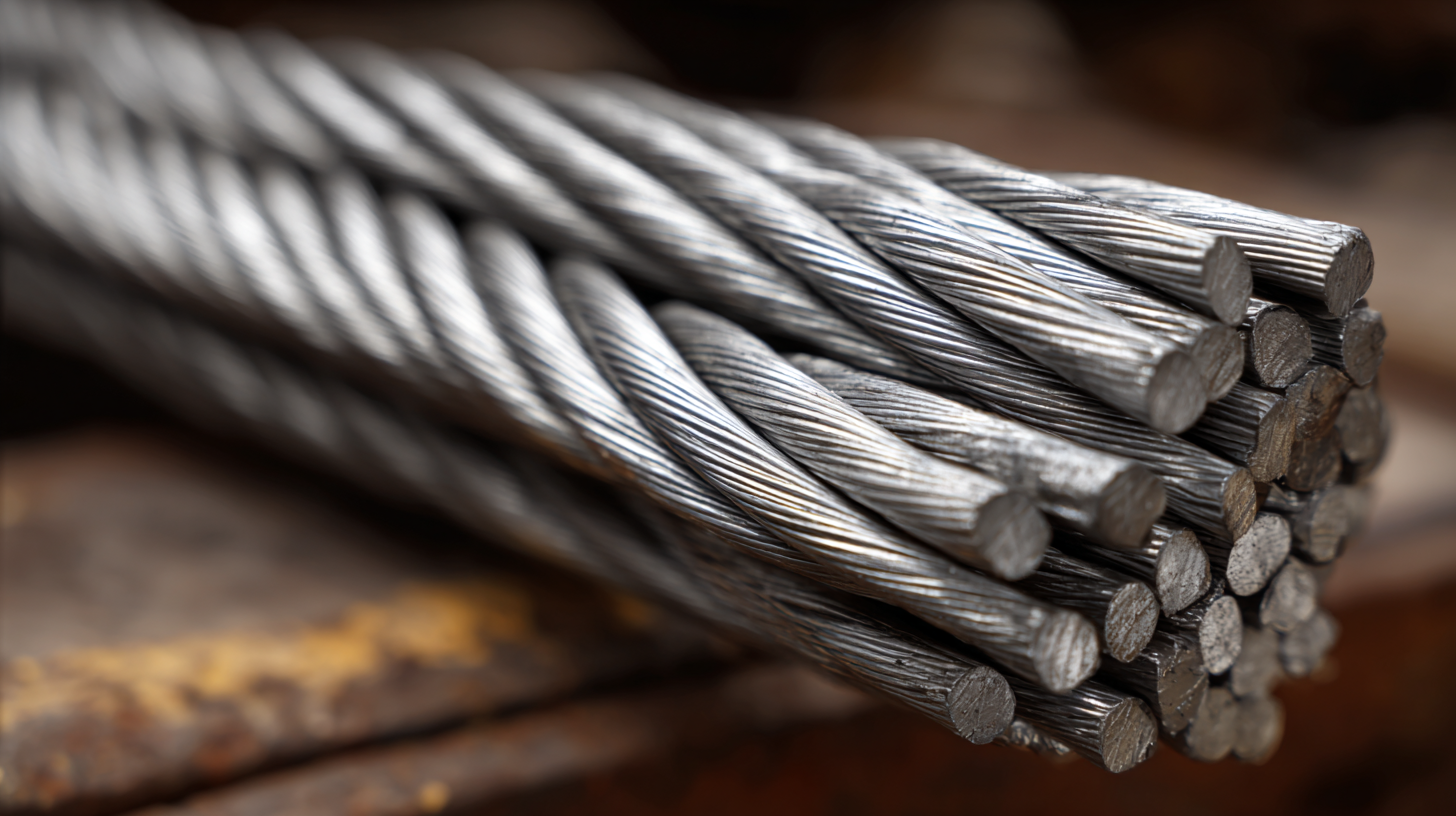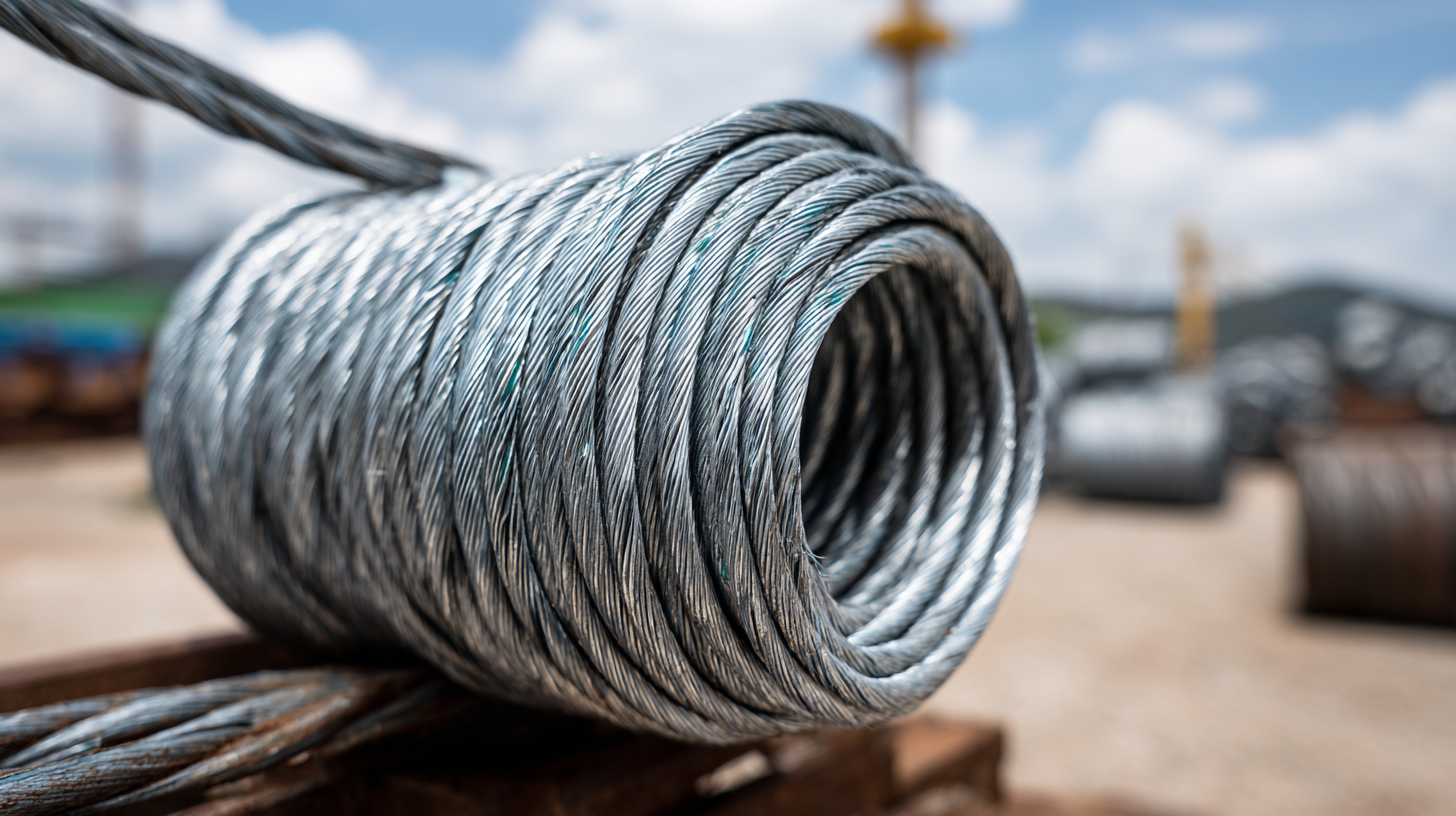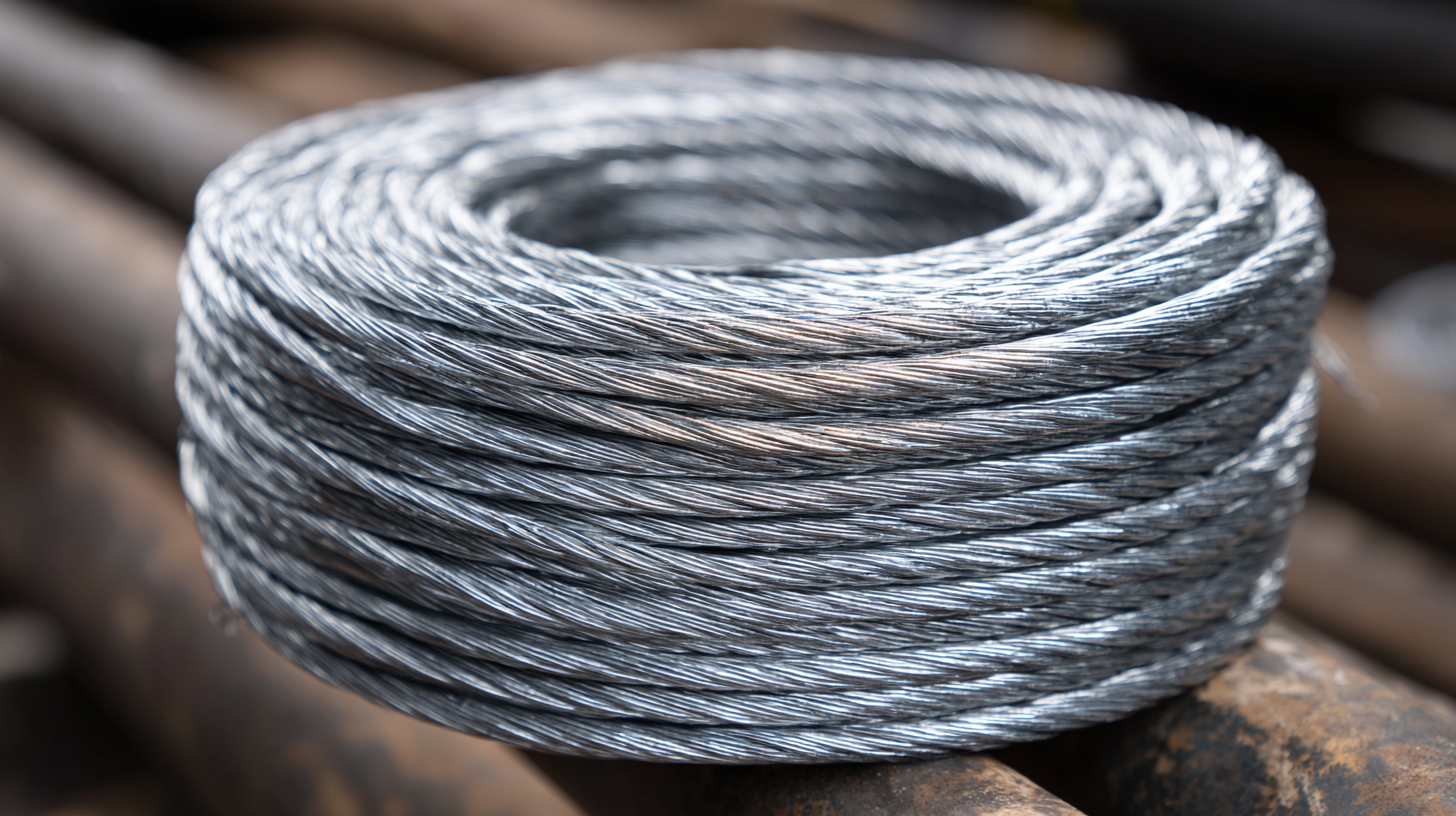
-
Home
-
Products
-
PVC Cable Material
-
Low Smoke Zero Halogen Cable Material
-
Cable material
-
Optical fiber cable
-
-
About Us
-
VR
-
News
-
Blog
-
Contact Us
Leave Your Message

When embarking on a project that requires strong and durable materials, the choice of galvanized steel wire strand can make all the difference. This versatile product is widely used in various applications, from construction and fencing to crafting and industrial uses, owing to its excellent resistance to rust and corrosion.
 However, with numerous options available in the market, selecting the best galvanized steel wire strand for your specific needs can be a daunting task. In this blog, we will explore seven essential tips that will guide you in making an informed decision, ensuring that your projects not only meet the required standards but also last for years to come.
Whether you're a seasoned contractor or a DIY enthusiast, understanding the characteristics and applications of galvanized steel wire strand will empower you to choose the right type for optimal performance.
However, with numerous options available in the market, selecting the best galvanized steel wire strand for your specific needs can be a daunting task. In this blog, we will explore seven essential tips that will guide you in making an informed decision, ensuring that your projects not only meet the required standards but also last for years to come.
Whether you're a seasoned contractor or a DIY enthusiast, understanding the characteristics and applications of galvanized steel wire strand will empower you to choose the right type for optimal performance.
When selecting galvanized steel wire strand for your projects, understanding the quality factors is essential. One key element to consider is the zinc coating thickness, which significantly impacts corrosion resistance. According to a report by the American Galvanizers Association, a minimum zinc coating of 1.2 oz per square foot is recommended for outdoor applications, as it enhances the lifespan of the wire strand. Insufficient coating can lead to early failure, especially in harsh environments.
Another important consideration is the tensile strength of the galvanized wire. Industry standards, such as those outlined by ASTM A585, stipulate that high-strength wire strands should have minimum yield strengths ranging from 30,000 to 90,000 psi depending on the specific type. Choosing a wire strand with appropriate tensile strength ensures it can withstand the required loads without deforming, making it crucial for projects such as bridge construction or fencing. Evaluating these factors not only ensures safety and durability but can also lead to cost savings in the long run by minimizing maintenance and replacement needs.
When selecting galvanized steel wire strand for your projects, understanding the different grades is crucial to ensure you choose the right material for your specific needs. Galvanized steel wire strands come in various grades, typically categorized by their tensile strength and corrosive resistance. For example, the American Society for Testing and Materials (ASTM) specifies several grades including ASTM A475 and ASTM A489, which are often used in construction and industrial applications. These standards indicate that higher-grade strands can withstand greater loads and have a longer lifespan, making them ideal for exposed environments.
In terms of corrosion resistance, the zinc coating thickness is a vital factor. Standard galvanized wire typically has a coating thickness ranging from 0.5 to 1.2 ounces per square foot, according to the ASTM A641 specifications. This specification correlates with the strand's durability; for example, a thicker coating can prolong the wire's life in harsh weather conditions, making it suitable for outdoor applications such as fencing and utility support. Reports from industry leaders suggest that using higher-grade galvanized steel wire strand can reduce maintenance costs by up to 30% over time due to its enhanced resistance to corrosion and mechanical failure. Making informed choices based on these grades and specifications not only optimizes the performance of your projects but also ensures longevity and reliability.
When selecting galvanized steel wire strand for your projects, understanding the significance of industry certifications is paramount, especially for import and export processes. Certifications not only authenticate the quality and compliance of the materials but also ensure that they meet international standards. This is particularly essential when navigating the complexities of global trade, as non-compliant products can lead to severe penalties and project delays.
 One important tip is to look for strands that hold certifications from recognized organizations. These certifications serve as a stamp of approval, assuring you that the materials have undergone
rigorous testing for durability and performance. Additionally, consider the specifications that your project demands – whether it’s tensile strength,
corrosion resistance, or flexibility. Aligning your selection with these requirements can enhance the efficacy of your projects.
One important tip is to look for strands that hold certifications from recognized organizations. These certifications serve as a stamp of approval, assuring you that the materials have undergone
rigorous testing for durability and performance. Additionally, consider the specifications that your project demands – whether it’s tensile strength,
corrosion resistance, or flexibility. Aligning your selection with these requirements can enhance the efficacy of your projects.
Another valuable tip is to partner with suppliers who emphasize transparency regarding their certifications. This includes providing documentation that proves their products are compliant with industry standards. Ensuring that you have access to this information can prevent unforeseen issues down the line, allowing you to confidently source the galvanized steel wire strand that best suits your needs.
 Galvanized steel wire strand is a versatile material widely used in various applications, ranging from construction to agriculture. One of the most prominent uses is in the construction of fences, where the durability and rust resistance of galvanized steel offer a long-lasting barrier against intruders and wildlife. This makes it an ideal choice for both residential and commercial properties. Moreover, its strength makes it suitable for tensioning applications, ensuring stability and security in structures over time.
Galvanized steel wire strand is a versatile material widely used in various applications, ranging from construction to agriculture. One of the most prominent uses is in the construction of fences, where the durability and rust resistance of galvanized steel offer a long-lasting barrier against intruders and wildlife. This makes it an ideal choice for both residential and commercial properties. Moreover, its strength makes it suitable for tensioning applications, ensuring stability and security in structures over time.
Another critical application of galvanized steel wire strand is in cable and wire reinforcement. In industries such as telecommunications and power distribution, these strands are essential for supporting power lines and communication cables, enabling them to withstand environmental stressors such as wind and ice. Additionally, they are commonly used in suspension bridges and various engineering projects, providing the necessary tensile strength while minimizing maintenance needs due to their corrosion-resistant properties. By selecting the right galvanized wire strand for specific projects, users can enhance longevity and performance, paving the way for successful outcomes.
Maintenance of galvanized steel wire strand is essential for extending its lifespan, particularly in demanding environments. One effective way to ensure longevity is to regularly inspect the wire strand for signs of corrosion. Seawater exposure can significantly accelerate corrosion, so pay special attention to locations where the wire has been in contact with saltwater. Implementing a consistent maintenance schedule can help identify issues early and reduce overall wear and tear.
Additionally, the storage conditions of the galvanized steel wire strand play a crucial role in its durability. Ensure the wire is stored in a dry, well-ventilated area to prevent moisture accumulation. Protecting the wire from direct exposure to harsh chemicals or extreme temperatures will further mitigate the risk of corrosion. As indicated by recent recommendations, understanding the impacts of environmental factors like temperature and oxygen levels can also aid in selecting the right care strategies tailored to specific project needs, ensuring the wire strand remains functional for many years.
Lastly, consider employing protective coatings or sealants to provide an additional barrier against environmental wear. This minor investment in protection can yield significant long-term benefits, keeping your galvanized steel wire strand performing optimally.